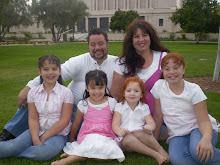Handout for Sunday, September 8, 2008
How to prepare for a power outage
As the old saying goes, an ounce of prevention is worth a pound of cure. If you follow the tips on this page, it's less likely you will need to go out for supplies during an outage, especially if the outage is during a storm.
The following basic supplies and preventative measures will help you prepare for an unexpected loss of electricity:
1. Maintain a first aid kit that includes your family's prescription medications. Make sure items in the first aid kit are in usable condition.
2. Keep a supply of special needs items for infants, elderly and/ or disabled family members.
3. Keep a battery-operated radio or TV handy to access news reports.
4. Ensure you have a supply of fresh batteries for all necessary equipment.
5. Keep a supply of bottled water -- at least one gallon per person.
6. Maintain a supply of food that won't spoil, and that doesn't need cooking to prepare. Make sure you have a manual can opener.
7. Ensure you have several coolers or ice chests -- to store ice if the outage is lengthy.
1. Keep important telephone numbers (local fire department, paramedics, police, hospital, doctor, relatives, friends, SRP, etc.) by the phone.
2. Place flashlights in handy locations, such as near telephones.
3. Install surge protectors to safeguard valuable electronic equipment such as computers and home entertainment systems.
4. Know where to find each utility shut off -- electricity, water and gas. Know how to turn each off. Have the proper tools to do so, and know where they are located.
5. Always back-up important computer-generated work and files.
6. If you have an automatic garage door, check the instructions or with the manufacturer to learn how to open the door manually (without power).
7. Consider keeping at least one car no less than half full with fuel; gas pumps are electrically operated and gas stations will be shut down during an outage. (However, stockpiling gasoline is NOT recommended, as gasoline is a hazardous, combustible substance.) Also, remember that portable gasoline generators should never be operated inside homes, garages, office buildings or other enclosed spaces.
8. Consider making a safety preparedness plan for your family. Such a plan would include a list and location of the above items. Be sure that you are prepared to meet the special needs of infants, and elderly or disabled family members. Also plan how you will care for any pets.





